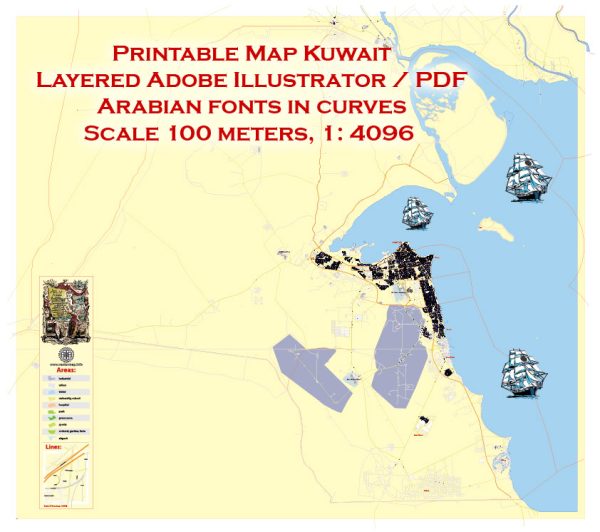Kuwait’s history of urban development is marked by a significant transformation from a traditional, nomadic society to a modern, urbanized nation. The country’s urban development can be divided into several key phases:
- Pre-oil Era (Before 1930s):
- Kuwait was primarily a maritime and trade-oriented society, with a focus on pearl diving, fishing, and trade.
- The architecture was traditional, featuring low-rise buildings made of mud, coral, and wood, reflecting the harsh desert environment.
- Oil Discovery and Early Development (1930s-1950s):
- The discovery of oil in commercial quantities in the 1930s transformed Kuwait’s economy and society.
- Urban development began with the establishment of basic infrastructure and facilities in Kuwait City, the capital.
- The influx of oil revenues allowed for the construction of modern buildings, roads, and utilities.
- Post-Independence Era (1961 onward):
- Kuwait gained independence from British protection in 1961, leading to increased sovereignty and control over its resources.
- The government initiated ambitious urban development projects to accommodate the growing population and diversify the economy.
- The Kuwait Fund for Arab Economic Development was established in 1961 to provide financial aid for infrastructure projects in various Arab countries.
- Gulf War and Reconstruction (1990s):
- The Gulf War in 1990-1991 had a significant impact on Kuwait’s infrastructure, with many buildings and facilities damaged or destroyed.
- The post-war period saw extensive reconstruction efforts, including the restoration of historic sites and the construction of new urban developments.
- 21st Century and Economic Diversification:
- Kuwait continued to invest in urban development to support its growing population and economy.
- Efforts were made to diversify the economy beyond oil, with a focus on sectors like finance, real estate, and tourism.
- The construction of iconic landmarks, such as the Kuwait Towers and the Kuwait National Cultural District, contributed to the modern skyline of Kuwait City.
- Challenges and Future Outlook:
- Despite rapid development, challenges include urban sprawl, traffic congestion, and the need for sustainable development.
- The government has been working on long-term plans, such as “Vision 2035,” to guide sustainable development, improve infrastructure, and enhance the quality of life.
Throughout its history, Kuwait has navigated the balance between preserving its cultural heritage and embracing modernity. The country’s urban development reflects its economic evolution, with oil wealth playing a pivotal role in shaping the urban landscape.


 Author: Kirill Shrayber, Ph.D.
Author: Kirill Shrayber, Ph.D.